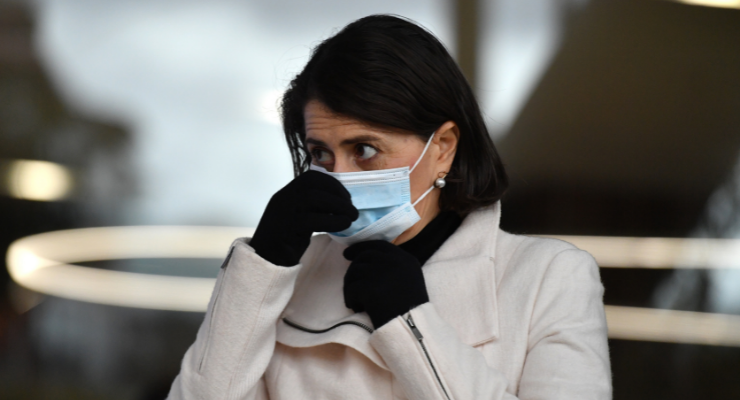
It’s taken less than a month for New South Wales to go from the “gold standard” of COVID-19 management to an outbreak that is shaping up to be the worst Australia has yet seen.
NSW Health reported the state’s first locally acquired cases of this wave on June 17. Three and a half weeks later, Gladys Berejiklian announced 112 new local cases amid increasingly strict lockdown measures for millions of Australians to combat the highly contagious Delta variant. That was yesterday; today there were 89 new cases.
The nature of outbreaks is that they tend to spiral out of control quickly, jumping from a handful of cases to dozens in only a day or two.
The size of Sydney’s most recent outbreak, however, has so far exceeded Australia’s most serious outbreak at the same point as shown in graphs prepared by covid19data.com.au’s Juliette O’Brien.

Two weeks after the first case was reported, the total number of local cases in NSW’s current outbreak was higher than any other Australian outbreak so far, including Victoria’s first and second wave.
NSW’s Avalon cluster in December 2020 started off quicker, with 101 cases after seven days compared with 31 for the current outbreak. It soon levelled out with 164 reported local cases by day 14, compared with 173 in the current outbreak.

Worryingly, the current NSW outbreak’s seven-day average for daily cases — a metric that smooths out the noise from variations in daily reporting to show the velocity of the outbreak — is ticking upwards as well. The seven-day average is lower than at the same point in Victoria’s second wave, although recent spikes in daily case numbers means this soon may change.

The current number of Sydney’s current unlinked cases are also exploding, showing that the state’s contact tracing efforts are being stretched in a way that they hadn’t in previous outbreaks.

The trajectory of outbreaks isn’t set in stone. Increasingly strict public health restrictions are meant to flatten the curve and stop the logarithmic growth in case numbers. But the current growth of NSW’s latest outbreak shows that Australia is still vulnerable and, if trends continue, could experience the worst outbreak yet.








This was always going to happen with a Coalition Queen Delta on the throne being portrayed by the Murdoch and Nine media and the diseased orifice that is Scovid Morri$sin as the gold standard of managing covid. An alternate reality being created despite the NSW Coalition having the record for the most virus ridden hotel room escapes and the unleashing upon the nation of the Ruby Princess.
She has gone from shredding documents pertaining to rorting, to arrogantly saying she had no regrets when it came to her slack handling of the vicious Indian Delta variant outbreak.
Berjiklian no longer wears the mantle of a mere Ruby Princess she has now crowned herself into a full blown royal catastrophe; and will always be known as the NSW Coalition Queen of the Delta Outbreak.
Always held up by Scovid Morri$sin, himself the embodiment of gross repeated corruption, negligence and incompetence, no matter what position he was rorting when a government employee, Morri$sin and his fellow Coalition consort Queen BinChicken, have put Australia on the path to death, disease and long illnesses for many.
Someone needs to get GB to clarify – when she says ‘health advice’, does she mean advice from the Health Department, or from actual doctors? Because Hazzard runs the health department and there’s no way health department advice isn’t political.
It’s advice from the Chief Medical Officer, Jimbo. Not NSW Health.
….plus the odd business associate.
Vic: There are currently 9,410 people in Victoria on red zone permits who are required to isolate for 14 days. Authorities checked on 269 permit holders yesterday and found two people “deliberately not isolating,” who have been referred to police.
Berjiklian:‘I do not regret a single decision we have taken because it has been based on health advice,’
The NSW premier says the pilot program designed to allow international students to return to Australia for university may be paused if the outbreak in Sydney remains out of control.
Screams were heard of outrage from the Coalition voter base, the wage thieves in hospitality, the growers and farmers, and university gold plated VC’s etc.
https://www.michaelwest.com.au/the-business-of-covid-gladys-berejiklian-hides-the-health-advice-as-pandemic-threatens-sydney/
Wont find this in the MSM